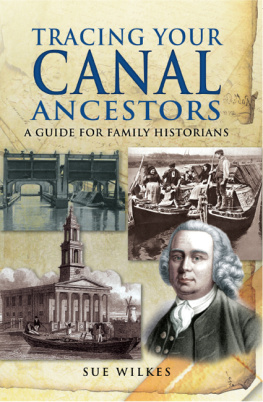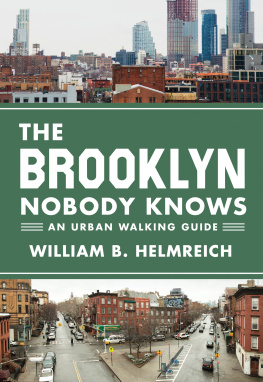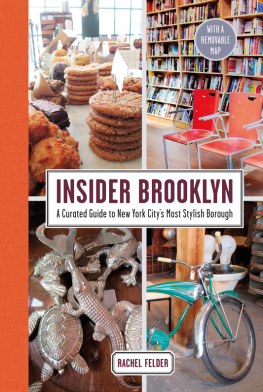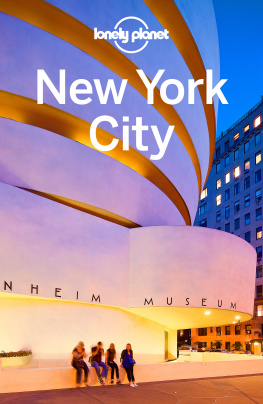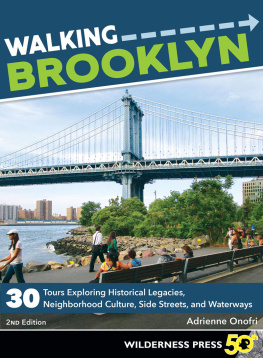GOWANUS

GOWANUS
BROOKLYNS CURIOUS CANAL
JOSEPH ALEXIOU

NEW YORK UNIVERSITY PRESS
New York and London
www.nyupress.org
2015 by New York University
All rights reserved
References to Internet websites (URLs) were accurate at the time of writing. Neither the author nor New York University Press is responsible for URLs that may have expired or changed since the manuscript was prepared.
LIBRARY OF CONGRESS CATALOGING-IN-PUBLICATION DATA
Alexiou, Joseph.
Gowanus : Brooklyns curious canal / Joseph Alexiou.
pages cm
Includes bibliographical references and index.
ISBN 978-1-4798-9294-5 (hbk. : alk. paper)
1. Brooklyn (New York, N.Y.)History. 2. Gowanus Canal (New York, N.Y.)History. 3. Gowanus Canal Region (New York, N.Y.)Environmental conditions. 4. WaterfrontsNew York (State)New YorkHistory. 5. Industrial districtsNew York (State)New York. 6. Brooklyn (New York, N.Y.)Social conditions. 7. Brooklyn (New York, N.Y.)CommerceHistory. I. Title. II. Title: Brooklyns curious canal.
F129.B7A43 2015
974.723dc23
2015013951
New York University Press books are printed on acid-free paper, and their binding materials are chosen for strength and durability. We strive to use environmentally responsible suppliers and materials to the greatest extent possible in publishing our books.
Frontispiece image: A map of Brooklyn based on surveys made in 17661767, drawn by British cartographer Bernard Ratzer. Courtesy of the New York Public Library.
Chapter opening art by Lisa Gilman
Book design by Adam B. Bohannon
Manufactured in the United States of America
10 9 8 7 6 5 4 3 2 1
Also available as an ebook
In memory of my grandmother, Esther Braun Sparberg
And what is that you smell?
Oh, that! Well, you see, he shares impartially with his neighbors a piece of public property in the vicinity; it belongs to all of them in common, and it gives to South Brooklyn its own distinctive atmosphere. It is the old Gowanus Canal, and that aroma you speak of is nothing but the huge symphonic stink of it, cunningly compacted of unnumbered separate putrefactions. It is interesting sometimes to try to count them. There is in it not only the noisome stenches of a stagnant sewer, but also the smells of melted glue, burned rubber, and smoldering rags, the odors of a boneyard horse, long dead, the incense of putrefying offal, the fragrance of deceased, decaying cats, old tomatoes, rotten cabbage, and prehistoric eggs.
And how does he stand it?
Well, one gets used to it. One can get used to anything, just as all these people do. They never think of the smell, they never speak of it, theyd probably miss it if they moved away.
Thomas Wolfe, You Cant Go Home Again, 1940
CONTENTS
ACKNOWLEDGMENTS
This book would not have existed without the encouragement, support, and expertise of numerous colleagues, teachers, mentors, and friends. The idea that became a whole book originated under the guidance of seasoned authors Professor Sam Freedman and Assistant Professor Kelly McMasters, who led the narrative nonfiction book seminar at Columbia Universitys Graduate School of Journalism in 2011. I thank them for their tutelage and detailed edits, questions, and prodding that nurtured a story about the history of Gowanus into sixty-thousand-word book proposal. Furthermore, I extend my heartfelt thanks to Deirdre Mullane, my agent who believed in this project. Her boundless enthusiasm, intelligence, and detailed eye ensured that my dream could become a reality, and Im grateful for her insight, pep talks, and efforts that extended far beyond her responsibilities. I want to thank Debbie Gershenowitz for bringing me on board with NYU; I want to thank Clara Platter, editor of this tome, for her patience and hard work on toning the manuscript into a readable story; I also recognize the tireless work and guidance of her editorial assistant, Constance Grady. Also, a big thank-you to Dorothea Halliday, Joseph Dahm, Margie Guerra, Betsy Steve, and the numerous and talented staff of NYU Press who were involved in the creation, publishing, and marketing of this book.
There would be no book without the libraries and archives that host the necessary information and hidden historical footnotes, which cannot function without the many librarians and archivists who aided my research. Please forgive me in advance for any unintended omissions, as the noble profession of keeping societys information organized often goes unappreciated: Thank you to the staff of the Brooklyn Museum library, the Brooklyn Public Libraryin particular the staff of the Brooklyn Room and the archivists of the Brooklyn Daily Eagle. Thank you to the staff of the Pratt Institute library, the Brooklyn College archive, and the library of the Brooklyn Historical Society, including librarians Elizabeth Call and Julie May; archivist Janet Marks at Long Island University and Amy Peck, the Prospect Park historian; the staff of the New York Public Library. And a special thanks to the research experts at the archives of the New York Historical Society, including Tammy Kiter, Joseph Ditta, and Edward OReilly. I could not have researched the many historical factoids and eras of this sprawling topic without the expertise of other Gowanus fanatics, including Linda Mariano, Katia Kelly, and Marlene Donnellyfriends, colleagues, and activists who have taught me much more about Brooklyn and the Gowanus than I knew possible (and introduced me to a plethora of inside information, contacts, sources, and other credibility). A special thank-you for each: to Linda for your cheerleading, guidance, and archival knowledge of Gowanus, to Katia for your kindness and tireless effort in maintaining the ongoing Gowanus timeline in your blog, Pardon Me for Asking, and to Marlene for your technical expertise and willingness to share it with us all. Other notable Gowanus obsessives include Celia Cacace, who bequeathed to myself and others a massive archive of South Brooklyn papers (as well as her knowledge, wit, and humor); Glenn Kelly, Margaret Maugenest, Lisa Ackerman, Frampton Tolbert, Sasha Chavchavadze, Leslie Albrecht, Eymund Diegel, Christine Petro, and Hans Hesselein, all of whom were enthusiastic in sharing their hard-earned knowledge with me. I thank Buddy Scotto and Bill Appell for some of the early interviews in my research, and their time, knowledge, and efforts toward building a better Gowanus. A huge thank-you to Natalie Loney, Christos Tsiamis, and Brian Carr, Environmental Protection Agency employees who have devoted years of their working lives to the Gowanus Superfund designation. Their willingness to speak at length about the science and politics surrounding the Superfund designation of the Gowanus gave me the necessary background to be able to speak about the Gowanus pollution with any kind of authority.
Over the past few years many wonderful people gave their precious time to bestow advice, read chapters and excerpts of this work, and offer the incessant encouragement required to produce a book. I therefore offer my most grateful and heartfelt thanks to the following: my classmates from the 2011 Columbia book seminar, in particular Jaime Joyce, Brian Spitulnik, and Philip Eil; writing mentors Jerry Portwood and Susan Shapiro (and her many students), also Adam Rathe, Mariah Summers, Kevin Coyne, Sean Gannet, Jen Messier, J. Soma, Jamie Courville, and Chris Reynolds. From the start of this process many dear friends offered eyes, ears, uncanny intellect, and support, including Veronica Rutter, Sandra Rothbard, Stephanie Morris, Ed Woodham, Ari Brand, Cait Petre, Joelle Berman, Adam Freelander, Julie Stein, Josh Kesner, Shana Siegel, Annie Orenstein, Aaron Orenstein, Matt Baer, Masha Katz, Ben Pisciotta, Andrew Gordon, Andrew Shield, Conor Yates, Ethan Baldwin, Eva Seligman, Carly Machado, Daniel Lubrano, Sean Billy Kizy, and Steven Valentino. I would never have gotten through this process (or my twenties) without the support and love of Eli Szenes-Strauss, Anne de Turenne, Erica Rosen, and Sara Dalziel.
Next page


